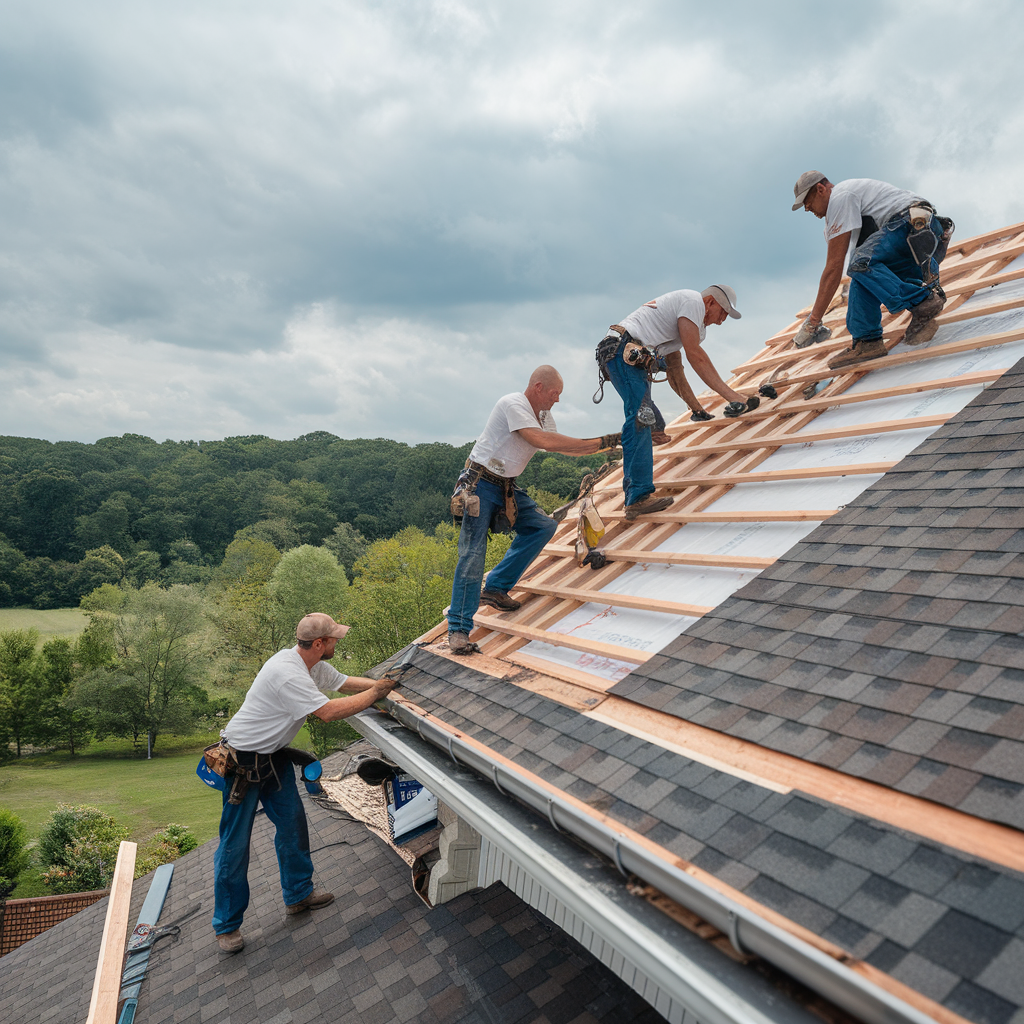Maximize Profits with Whole Home Upselling Strategies Today
Understanding Whole Home Upselling At Best Roofing Now, we understand that maximizing profits is essential for any roofing business. One effective strategy that has gained traction in recent years is whole home upselling. This approach involves offering additional products or services that complement the primary roofing job, creating a comprehensive solution for homeowners. The Benefits of Whole Home Upselling Whole home upselling offers numerous advantages for both roofing contractors and homeowners: Increased revenue per customer Enhanced customer satisfaction Improved home energy efficiency Streamlined home improvement process By implementing whole home upselling strategies, Best Roofing Now can provide more value to our customers while boosting our bottom line. Key Whole Home Upselling Opportunities When it comes to roofing projects, there are several areas where whole home upselling can be particularly effective: 1. Insulation Proper insulation is crucial for maintaining a comfortable home temperature and reducing energy costs. As roofing professionals, we at Best Roofing Now can easily identify and address insulation issues during a roof replacement or repair. Upselling opportunities: Attic insulation upgrades Radiant barrier installation Blown-in insulation for walls 2. Ventilation Adequate ventilation is essential for preventing moisture buildup and extending the life of your roof. Best Roofing Now can offer various ventilation solutions to complement our roofing services. Upselling opportunities: Ridge vents installation Soffit vent upgrades Gable vent additions 3. Gutter Systems Effective water management is crucial for protecting your home’s foundation and preventing water damage. Upgrading or replacing gutter systems can be an excellent upselling opportunity for Best Roofing Now. Upselling opportunities: Seamless gutter installation Gutter guards or covers Downspout extensions Implementing Whole Home Upselling Strategies To successfully implement whole home upselling strategies at Best Roofing Now, we focus on the following key areas: 1. Education and Training Our team at Best Roofing Now undergoes comprehensive training to understand the benefits and applications of various whole home solutions. This knowledge allows us to effectively communicate the value of these additional services to our customers. 2. Needs Assessment We conduct thorough inspections and consultations to identify potential areas for improvement in each customer’s home. This personalized approach helps us tailor our upselling recommendations to meet the specific needs of each homeowner. 3. Bundled Packages Best Roofing Now offers bundled packages that combine roofing services with complementary whole home solutions. These packages provide added value for customers and simplify the decision-making process. 4. Financing Options To make whole home upgrades more accessible, we provide flexible financing options that allow customers to invest in comprehensive home improvements without straining their budgets. Overcoming Objections in Whole Home Upselling While whole home upselling can be highly effective, it’s essential to address common customer objections: Cost concerns: Emphasize long-term savings and increased home value Scope of work: Highlight the convenience of addressing multiple issues simultaneously Necessity: Educate customers on the benefits of preventive maintenance and energy efficiency At Best Roofing Now, we focus on building trust and providing transparent information to help customers make informed decisions about whole home upgrades. Measuring Success in Whole Home Upselling To ensure the effectiveness of our whole home upselling strategies, Best Roofing Now tracks key performance indicators, including: Upsell conversion rate Average revenue per customer Customer satisfaction scores Repeat business and referrals By consistently monitoring these metrics, we can refine our approach and maximize the benefits of whole home upselling for both our business and our customers. Conclusion Whole home upselling presents a valuable opportunity for Best Roofing Now to increase profits while providing comprehensive solutions to our customers. By focusing on education, personalized recommendations, and transparent communication, we can successfully implement these strategies and drive growth in our roofing business. As we continue to refine our approach, we remain committed to delivering exceptional value and service to homeowners in our community. Understanding Whole Home Upselling At Best Roofing Now, we understand that maximizing profits is essential for any roofing business. One effective strategy that has gained traction in recent years is whole home upselling. This approach involves offering additional products or services that complement the primary roofing job, creating a comprehensive solution for homeowners. The Benefits of Whole Home Upselling Whole home upselling offers numerous advantages for both roofing contractors and homeowners: Increased revenue per customer Enhanced customer satisfaction Improved home energy efficiency Streamlined home improvement process By implementing whole home upselling strategies, Best Roofing Now can provide more value to our customers while boosting our bottom line. Key Whole Home Upselling Opportunities When it comes to roofing projects, there are several areas where whole home upselling can be particularly effective: 1. Insulation Proper insulation is crucial for maintaining a comfortable home temperature and reducing energy costs. As roofing professionals, we at Best Roofing Now can easily identify and address insulation issues during a roof replacement or repair. Upselling opportunities: Attic insulation upgrades Radiant barrier installation Blown-in insulation for walls 2. Ventilation Adequate ventilation is essential for preventing moisture buildup and extending the life of your roof. Best Roofing Now can offer various ventilation solutions to complement our roofing services. Upselling opportunities: Ridge vents installation Soffit vent upgrades Gable vent additions 3. Gutter Systems Effective water management is crucial for protecting your home’s foundation and preventing water damage. Upgrading or replacing gutter systems can be an excellent upselling opportunity for Best Roofing Now. Upselling opportunities: Seamless gutter installation Gutter guards or covers Downspout extensions Implementing Whole Home Upselling Strategies To successfully implement whole home upselling strategies at Best Roofing Now, we focus on the following key areas: 1. Education and Training Our team at Best Roofing Now undergoes comprehensive training to understand the benefits and applications of various whole home solutions. This knowledge allows us to effectively communicate the value of these additional services to our customers. 2. Needs Assessment We conduct thorough inspections and consultations to identify potential areas for improvement in each customer’s home. This personalized approach helps us tailor our upselling recommendations to meet the specific needs of each homeowner. 3. Bundled Packages Best Roofing Now offers bundled packages that combine roofing services




